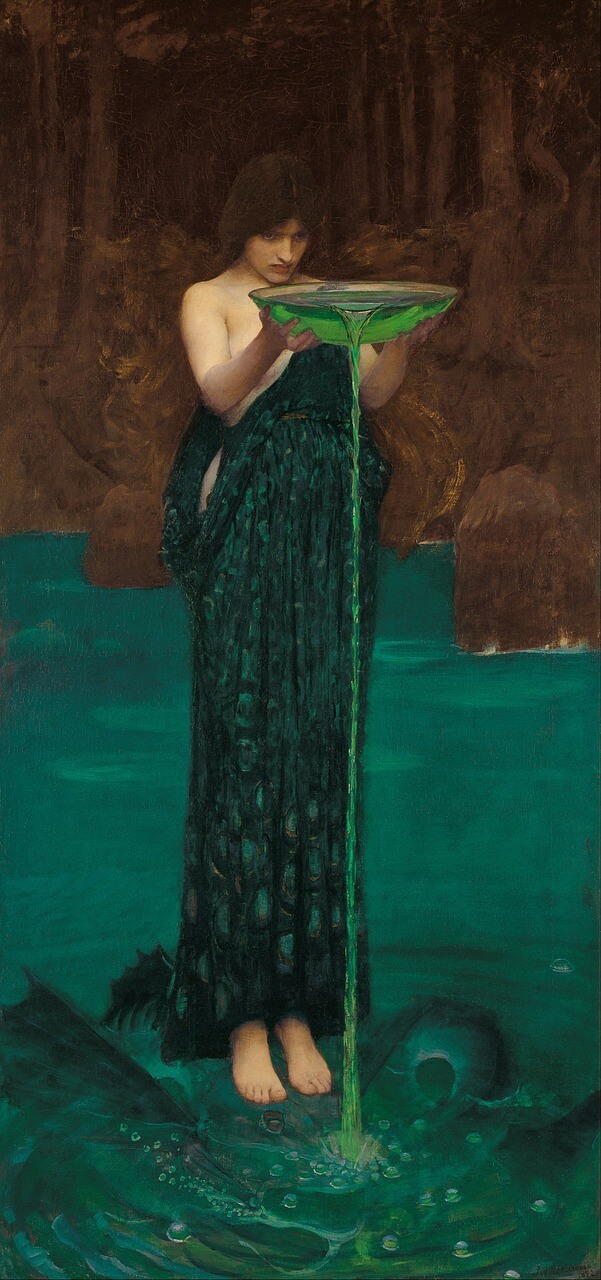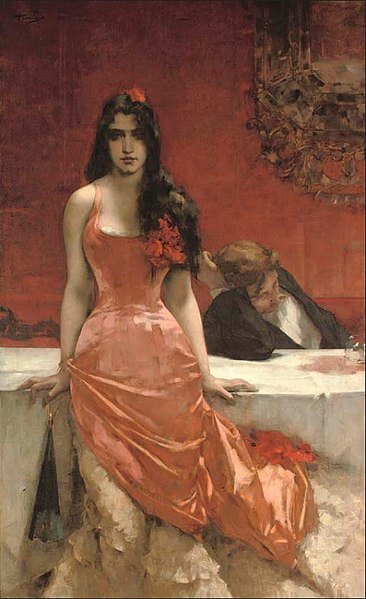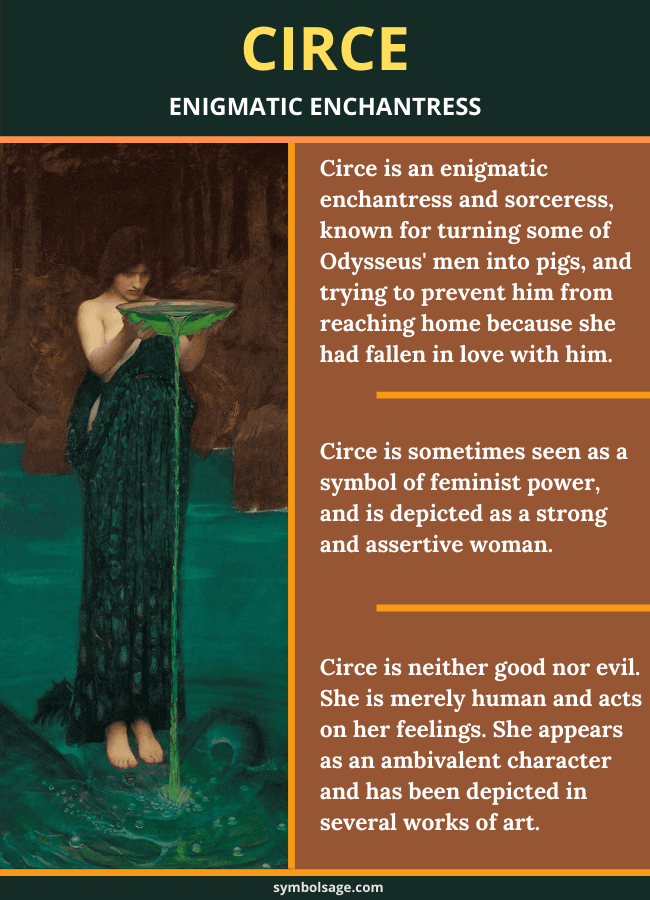
Table of Contents
Circe is one of the most captivating and enigmatic figures in Greek mythology. She was an enchantress who possessed a magical wand and concocted magical potions. Circe was famed for her ability to transform enemies and offenders into animals. She was often confused with the nymph Calypso.
Let’s take a closer look at Circe and her unique magical powers.
Origins of Circe
Circe was the daughter of sun god, Helios, and the ocean nymph, Perse. Some writers say that she was born to Hecate, the goddess of witchcraft. Circe’s brother, Aeëtes, was the guardian of the Golden Fleece, and her sister Pasiphaë was a powerful sorceress and the wife of King Minos. Circe was the aunt of Medea, a popular witch in Greek mythology.
Circe fell in love with several Greek heroes, but could only win back the affection of Odysseus, with whom she had three sons.
Island of Circe
According to Greek writers, Circe was banished to the Island of Aeaea after she murdered her husband, Prince Colchis. Circe became the queen of this solitary island and built herself a palace amongst its woods. Her island was surrounded by obedient and domesticated animals who were under her spell. Travelers and sea voyagers were often warned about Circe’s sorcery and her ability to lure people into the island.
1- Circe and Odysseus

Circe encountered Odysseus (Latin name: Ulysses) when he was returning home from the Trojan war. Circe spotted Odysseus’ crew prowling about her island and invited them for a meal. Not suspecting anything amiss, the crew agreed to the feast and the sorceress added a magical potion to the meal. Circe’s concoction transformed Odysseus’ crew into swine.
One of the crew members managed to escape and warned Odysseus about Circe’s spell. Hearing this, Odysseus obtained guidance from Athena’s messenger on how to thwart the powers of Circe. Odysseus met Circe with a molly herb, which protected him from the sorceress’ magical powers and managed to convince her to undo the spell and free his crew.
Circe not only agreed to Odysseus’ request, but also pleaded with him to remain on her island for a year. Odysseus stayed with Circe and she gave birth to three of his sons, who were either Agrius, Latinus and Telegonus, or Rhomos, Anteias, and Ardeias, sometimes claimed to be the founders of Rome, Antium and Ardea.
After a year, Odysseus left Circe’s island and continued on his journey back home to Ithaca. Before he left, Circe guided Odysseus on how to enter the Underworld, communicate with the dead, and appeal to the gods as part of the steps required to get back to Ithaca. Eventually, with the assistance of Circe, Odysseus was able to find his way back to Ithaca.
2. Circe and Picus
According to Greek and Roman mythology, Circe fell in love with Picus, the King of Latium. Picus couldn’t reciprocate Circe’s feelings as his heart belonged to Canens, the daughter of the Roman god Janus. Out of jealousy and anger, Circe transformed Picus into an Italian woodpecker.
3. Circe and Glaucus
In another narrative, Circe fell in love with Glaucus, a sea god. But Glaucus couldn’t return Circe’s affections, as he admired and loved the nymph Scylla. To take revenge, the envious Circe poisoned the bathwaters of Scylla and turned her into a hideous monster. Scylla then haunted the waters and became famous for wrecking and destroying ships.
4. Circe and the Argonauts
Circe’s niece, Medea, helped Jason and the Argonauts on the quest of the golden fleece. Medea had stalled the advances of Aeetes by murdering her own brother. Circe absolved Medea and Jason of their sins and enabled them to move forward with their quest and return safely home.
Circe’s Son Telegonus and Odysseus
When Circe’s son Telegonus became a young man, he embarked on a journey to find his father, Odysseus. For his adventure, Telegonus took with him a poisonous spear gifted by Circe. However, due to ill-fate and unexpected circumstances Telegonus accidentally slew Odysseus with the spear. Accompanied by Penelope and Telemachus, Telegonus took his father’s corpse to Circe’s island. Circe then absolved Telegonus of his sin and granted all three of them immortality.
Death of Circe
In another version of the story, Circe used her magical powers and herbs to bring back Odysseus from the dead. Odysseus then arranged a marriage for Telemachus and Circe’s daughter, Cassiphone. This proved to be a grave mistake as Circe and Telemachus couldn’t get along. One day, a large quarrel ensued, and Telemachus slew Circe. Grieved by her mother’s death, Cassiphone in return murdered Telemachus. Hearing about these horrific deaths Odysseus passed away from sorrow and grief.
Cultural Representations of Circe

The myth of Circe has been a popular theme and motif in literature.
- Writers such as Giovan Battista Gelli and La Fontaine, have described Circe’s spell in a positive note, and observed the crew to be much happier in pig form. From the Renaissance onwards, Circe was represented both as a feared and desired woman in works such as Andrea Alciato’s Emblemata and Albert Glatigny Les Vignes Folles.
- Feminist writers reimagined the myth of Circe to portray her as a strong and assertive woman. Leigh Gordon Giltner in her poem Circe depicted the sorceress as a powerful woman, who was conscious of her sexuality. British poet Carol Ann Duffy also wrote a feministic monologue titled Circe.
- The myth of Circe has also influenced several works of classical literature such as William Shakespeare’s A Midsummer Night’s Dream and Edmund Spenser’s Faerie Queene, where Circe is represented as a seductress of knights.
- Circe was a popular theme in pottery, paintings, sculptures and artworks. A Berlin vase shows Circe holding a wand and transforming a man into a pig. A Etruscan coffin depicts Odysseus threatening Circe with a sword, and a 5th-century Greek statue shows a man morphing into a pig.
- In the famous DC comics, Circe appears as an enemy of Wonder Woman, and she’s one of major antagonists in the video game, Age of Mythology.
Circe and Science
Medical historians have speculated that Circe used the Circaea herbs to cause hallucinations among the crew of Odysseus. The moly herb that Odysseus carried was in fact a snow drop plant that had the ability to counter the effects of Circaea.

In Brief
The myth of Circe was originally a minor tale without wide recognition or fame. Later writers and poets took up her story and reimagined it in various ways. Circe remains an ambivalent character and one that continues to intrigue.








